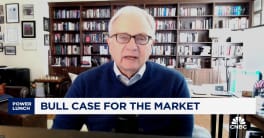Debate continues over including a 20 percent down payment requirement in new regulations defining "Qualified Residential Mortgages" (QRMs) under the Dodd-Frank Wall Street Reform and Consumer Protection Act. A QRM would be exempted from the rule requiring lenders to retain a 5 percent interest in each mortgage it securitizes; a policy called "risk retention."
The Community Mortgage Banking Project (CMBP) released a report Thursday criticizing such a down payment requirement because, among other reasons, it would be good for mega banks. And how do we know the report asked; because Jamie Dimon told us so! Dimon, CEO of JP Morgan Bank was quoted in a recent report from Citigroup as saying that such a requirement could ultimately end up as a positive for the larger players such as JP Morgan and Wells Fargo given they have the scale to hold the 5 percent of non-qualifying mortgage on their balance sheet.
Glen Corso, managing director of the CMBP said "Today, the three largest banks - JP Morgan, Wells Fargo and Bank America - account for more than half of the mortgage lending in the country. A 20 percent down payment requirement as part of the QRM will simply accelerate that concentration while making loans more expensive for responsible borrowers. This is not what the Dodd-Frank Act reforms were supposed to do."
As evidence of that claim, CMBP referenced a letter sent in February from three of the senators responsible for the QRM exemption language, Senators Kay Hagen (D-NC), Mary L. Landrieu (D-LA) and Johnny Isakson (R-GA) wrote to six regulators responsible for formulating the QFM regulations including the Chair of the Federal Reserve, and heads of the Department of Housing and Urban Development, Federal Housing Finance Agency, and Federal Deposit Insurance Corporation. The letter expressed concern that a number of issues outside of the legislative scope and intent of the risk retention rules might unnecessarily slow the rulemaking process.
The letter directly addressed a high down payment requirement for any mortgage to meet the QRM exemption saying it would be "inconsistent with our legislative intent. As the authors of the QRM provision, we can assure you that, although there was discussion about whether the QRM should have a minimum down payment, in negotiations during the drafting of our provision we intentionally omitted such a requirement.
The letter said that the purpose of the QRM is to create a robust underwriting framework to attract private capital. "We recognized the importance of establishing a framework that would allow creditworthy first-time homebuyers to have access to the benefits of loans meeting the QRM standard. We also recognized that homeowners in the hardest hit housing markets have lost extraordinary amounts of equity as result (sic) of plummeting home prices. For all of these families, a high down payment is simply out of reach. A QRM with a high down payment requirement would force them to postpone buying or refinancing a home for years, or to take on mortgages at much higher interest rates."
The CMBP paper said an analysis of 33 million home loans written between 2002 and 2008 found that boosting down payments in 5 percent increments had only a minor impact on default rates. For example, increasing a 5 percent down payment to 10 percent, all other things being equal, reduced defaults by an average of only two to- three-tenths of a percent but eliminates between 7 and 15 percent of potential borrowers from eligibility for a loan. Increasing it to 20 percent would knock out another 20 to 25 percent of borrowers while improving the default rate by only about eight-tenths of a percent.







